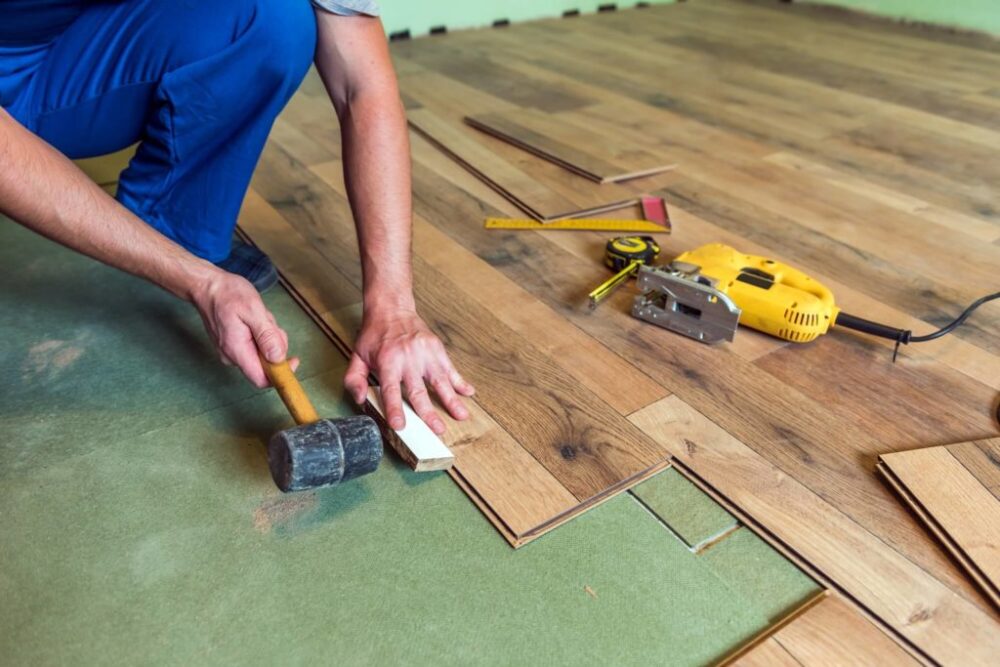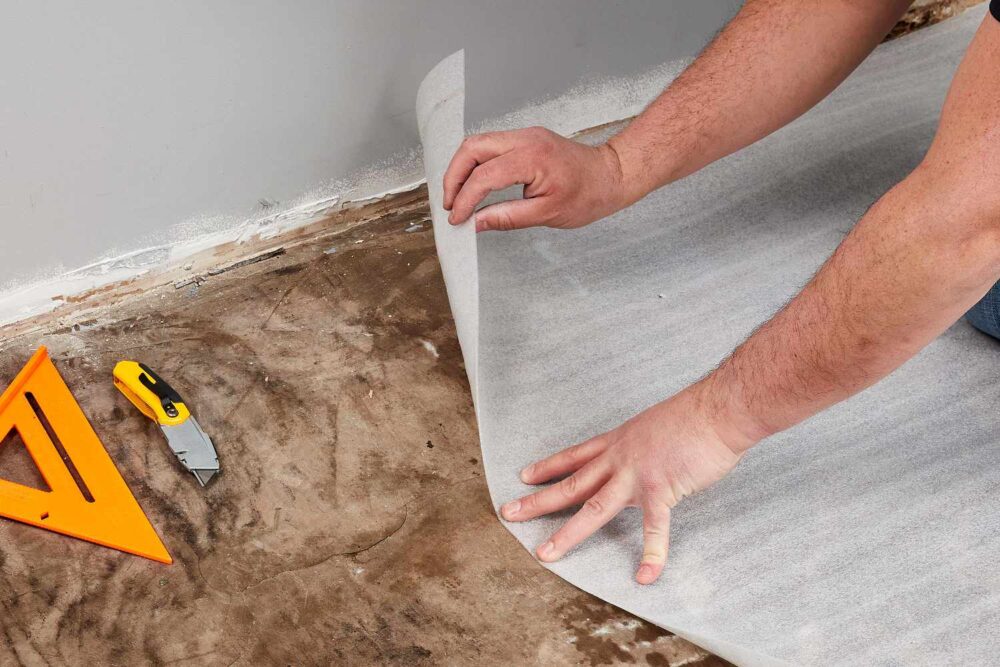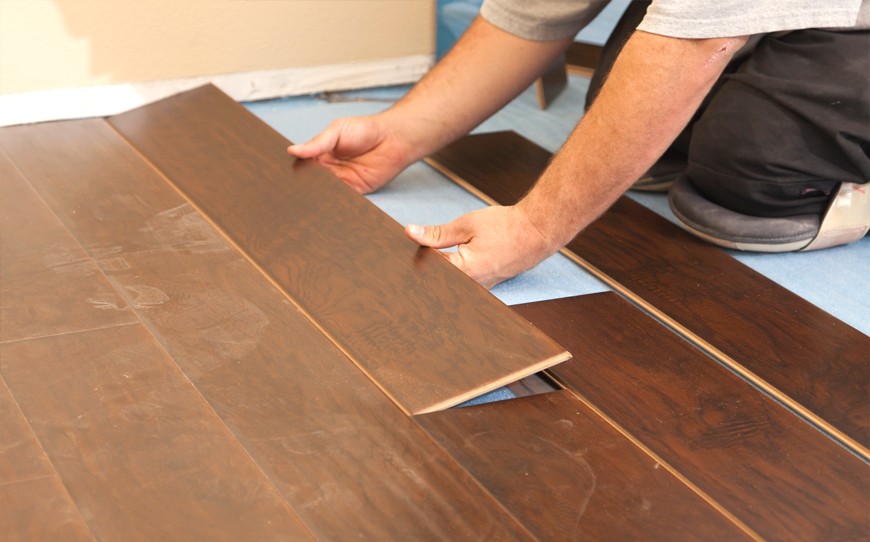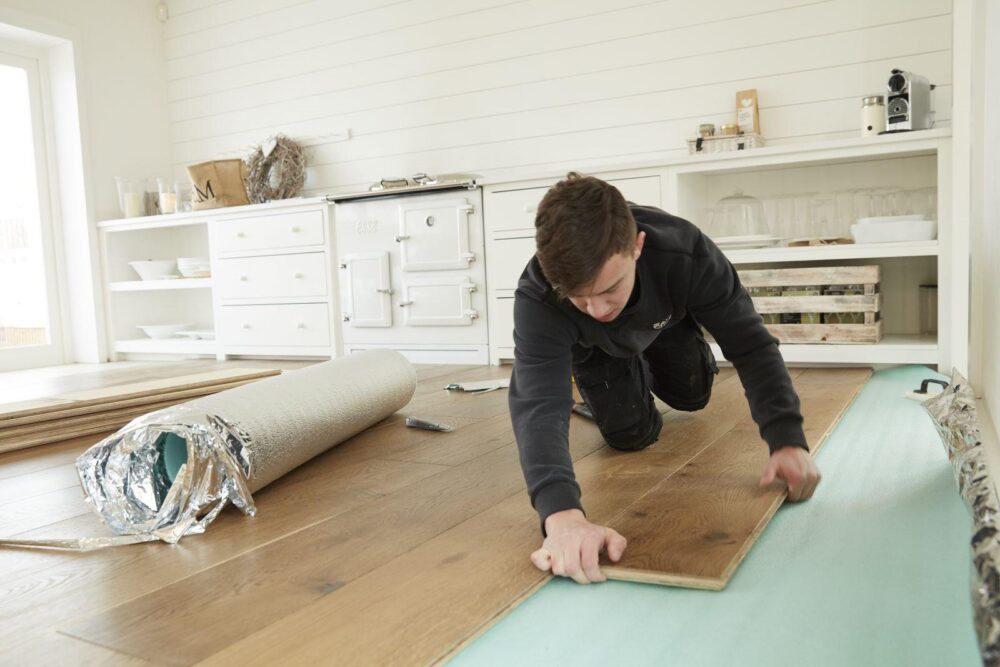The most common query that arises whenever installing vinyl flooring is whether they need underlayment or not. One must understand that underneath a surface requires just as much effort as beautifying the wooden flooring, concrete floor, or tiles.
In the most straightforward words, underlayment is an excellent addition to any vinyl flooring installation in Singapore. The global flooring underlayment market is one of the fastest-growing sectors. According to recent statistics, the global market value of underlayment was found to be 1353.8 million dollars in 2020, and it is anticipated to achieve 1672.2 million dollars by the end of 2027.
An underlayment is profitable for all flooring types, including vinyl tiles. It can significantly improve sound absorption, sustain the life of flooring, provide underfoot comfort, and improve the functionality of vinyl tiles.
Reasons To Install An Underlayment
The benefits of installing an underlayment range from being a moisture barrier to blocking cold weather. Check out the various insightful reasons you must invest in top-notch underlayment to make the most of your vinyl flooring.
It Acts As A Barrier Towards Moisture

One must understand that maintaining the quality of the subfloor plays a substantial role in ensuring long-lasting flooring. This can be problematic if the subfloor undergoes structural damage in wet, damp areas like washrooms, bathrooms, kitchens, laundry rooms, etc.
Although vinyl flooring is primarily water-resistant, areas prone to water and spillage require extra protection. Additionally, if one is installing vinyl tiles on a concrete floor, installing a water-resistant underlayment is essential. Water passing through concrete floors can lead to the generation of molds, odor, chemical reactions, and even life-threatening health problems.
It Provides Extra Softness To The Floor
It can be highly excruciating to withstand hard flooring for extended periods. Such an incident might occur when one is washing dishes or preparing meals for dinner. Additionally, if one has toddlers at home, hard flooring can be a significant risk for them. Crawling, learning to walk, or just playing around with their toys can be extremely painful for kids.
The benefit of installing underlayment is that it provides a cushion-like feel to the floor. Thus, giving comfort to the family members and kids. Additionally, an underlayment helps ensure that people are safe from injuries in case of a mishap like a sudden slip-and-fall case on the floor.
It Aids In Restricting Cold

One must know that vinyl flooring is exceptionally good at providing warmth underfoot compared to other materials like ceramic, tiles, bricks, or stones. Additionally, it can be challenging to deal with freezing floors barefoot if one lives in a cold climate. Adding underlayment to vinyl flooring can significantly intensify the insulation process.
The thick, dense, and sturdy underlayment aids in blocking cold from entering the house and simultaneously prevents hot air from escaping the house. An underlayment can quickly transform one’s freezing, uncomfortable home into a warm, snuggly one.
It Absorbs The In-House & Surrounding Sounds
It can be highly unpleasant to hear footsteps whenever someone climbs the stairs or the hustle and bustle of kids and pets when they are casually playing around. To address this unpleasant noise, one must consider installing underlayment. Underlayment works like carpeting when it comes to absorbing sounds.
In addition to footsteps, underlayment can help deaden the sounds of television, radios, or conversations between two people. Sometimes, it can be highly troublesome for neighbors to deal with constant noise from the other houses, especially if one has thin walls. Hence, one must consider installing underlayment to deaden unnecessary sounds and maintain a good relationship with neighbors.
It Conceals The Flaws Of The Subfloor

Having a subfloor that has been thoroughly prepared before installing any hard flooring is crucial. When it concerns installing hard flooring over a subfloor that is not quite ideal, vinyl tile is better tolerant of defects than other hard flooring forms.
Every flaw in a subfloor, including irregularities, blemishes, splits and bending, gaps, and many more will be visible if materials like ceramic or natural stone tile are attempted to be installed on it. However, it’s also crucial to prepare the floor before installing vinyl flooring. If the flooring is not smooth and consistent, it can give a “clapping” or “popping” sound every time you walk.
By installing an underlayment, one can avoid the sounds of “clapping” or “popping.” Additionally, if one considers the situation financially, it is beneficial to conceal these flaws by installing an underlayment rather than repairing the subfloor.
Tips To Choose The Right Underlayment
When choosing a suitable underlayment for your home, there are various factors one must need to consider. These factors include types of underlayment, evaluating the condition of the subfloor, and keeping in check with the building rules and regulations.
Determine The Type Of Underlayment You Need

Four underlayment options are foam, felt, rubber, and cork.
- Felt- It is the most basic type of underlayment. It provides moderate sound absorption and moisture resistance.
- Foam- It is the most suitable underlayment as it can be easily installed and reasonably priced. Additionally, it offers superior sound absorption.
- Rubber- With its improved ability to absorb vibrations, noise, and disturbances, this underlayment raises the bar for soundproofing. Additionally, rubber underlayment is one of the simplest types to install because of its pliability and elasticity.
- Cork- It is the greenest form of underlayment as it originates from a natural source. Additionally, it provides top-notch sound absorption and heat insulation qualities.
Check The Conditions Of the Subfloor
The most adaptable underlayment alternatives function better with broken or irregular subfloors because they can cover up any subfloor flaws.
If the flooring is plywood, go with a moderately permeable underlayment. This underlayment promotes airflow between the wooden subfloor and the hardwood floor without allowing rot or fungal growth.
If the flooring is made of concrete, go with a waterproof underlayment. This substance is made to halt moisture and prevent it from penetrating the concrete and the hardwood floor.
Keep Up With Building Requirements

Remember to check the underlayment requirements for large-scale buildings when installing hardwood flooring. Your building can specify that you use an underlayment with a specific sound transmission class (STC) rating for sound insulation or an impact isolation class (IIC) grade for absorbing footsteps.
Conclusion
Vinyl flooring is versatile in itself. However, adding a thick, dense underlayment layer to the flooring can ensure extra protection, heat insulation, and sound absorption in an apartment. Many homeowners who do not install underlayment in the beginning regret doing so. Lack of underlayment leads to reduced life of flooring and diminished functionality. Hence, establishing a suitable underlayment is the best decision one could make when installing vinyl flooring.



